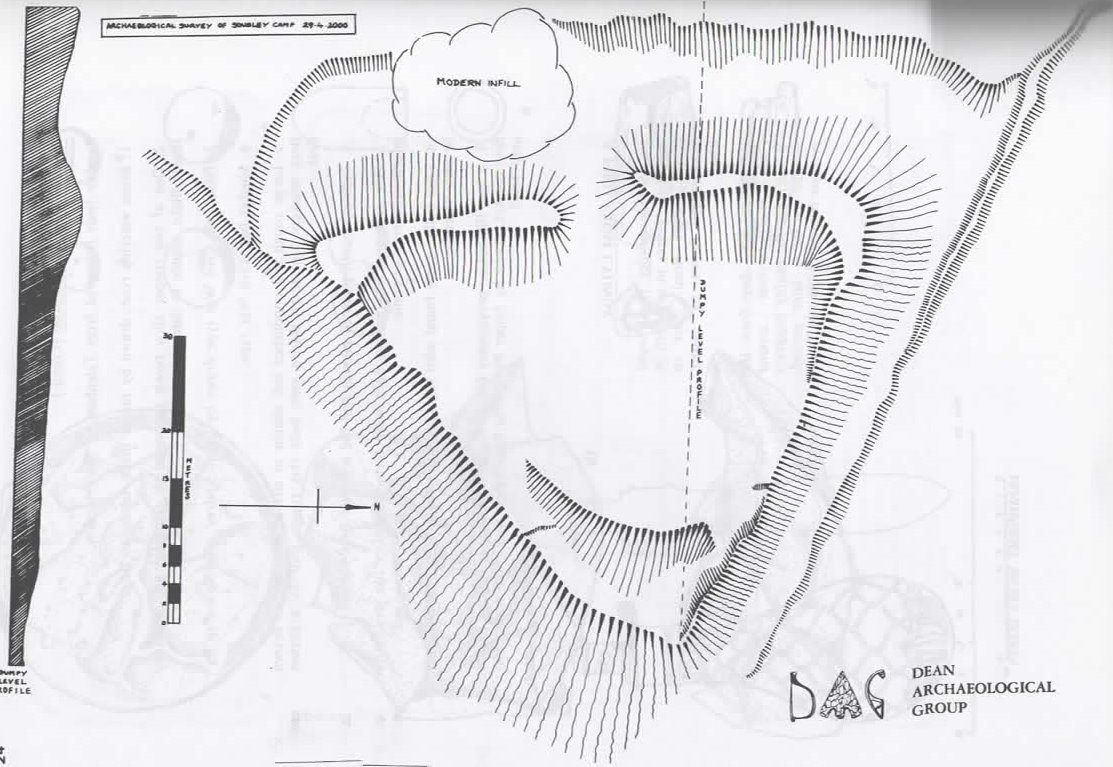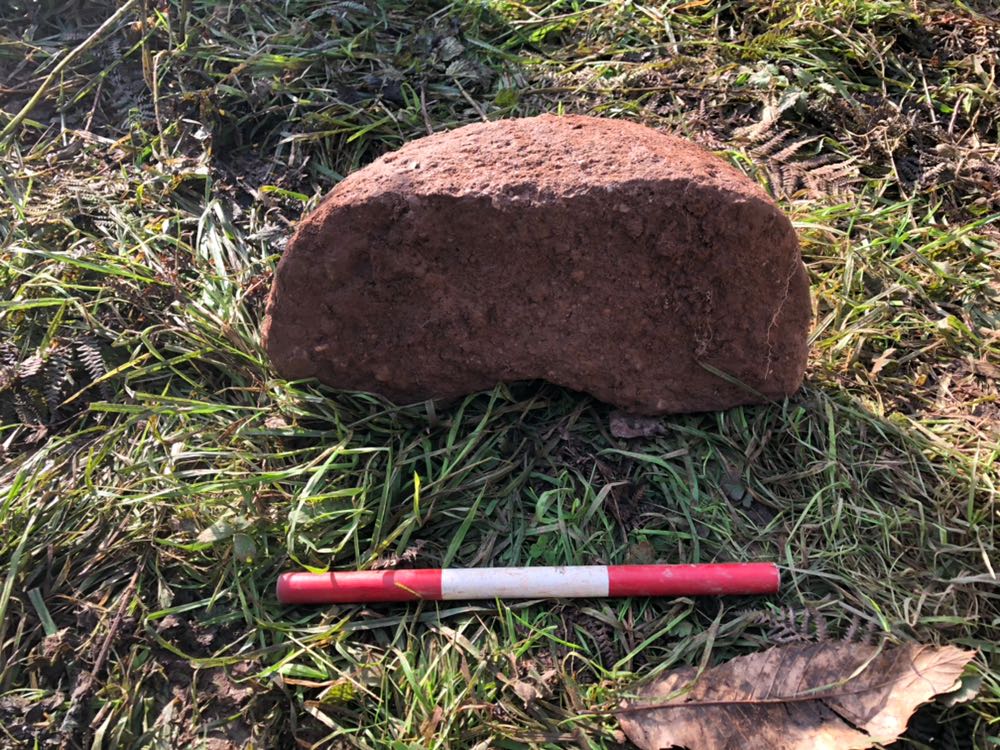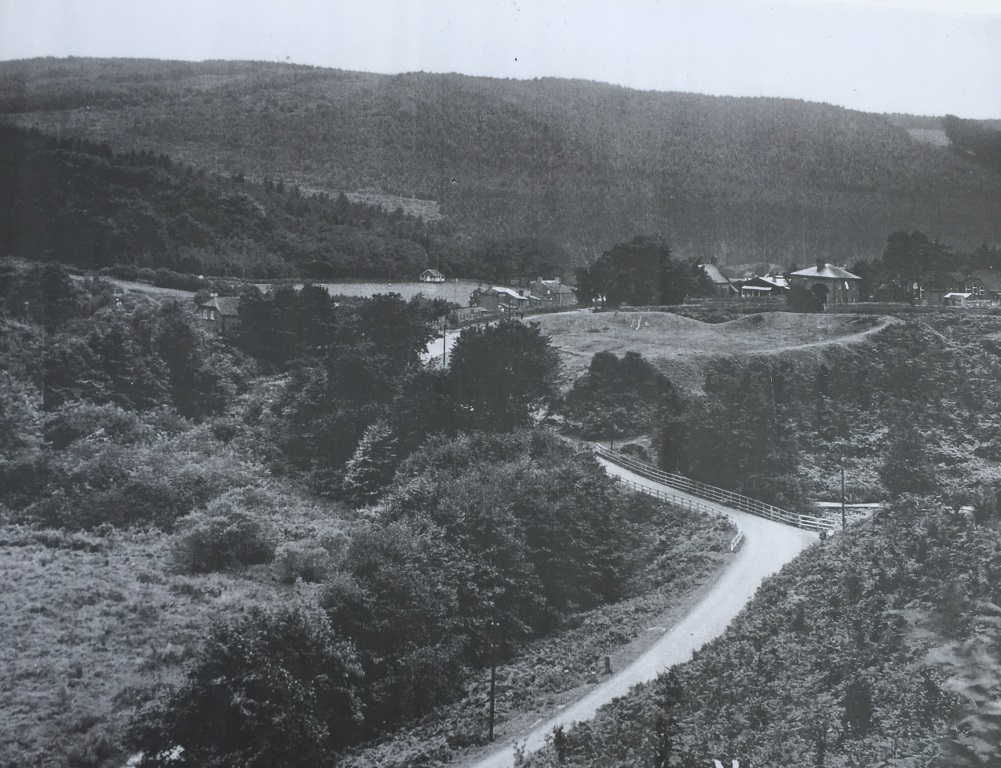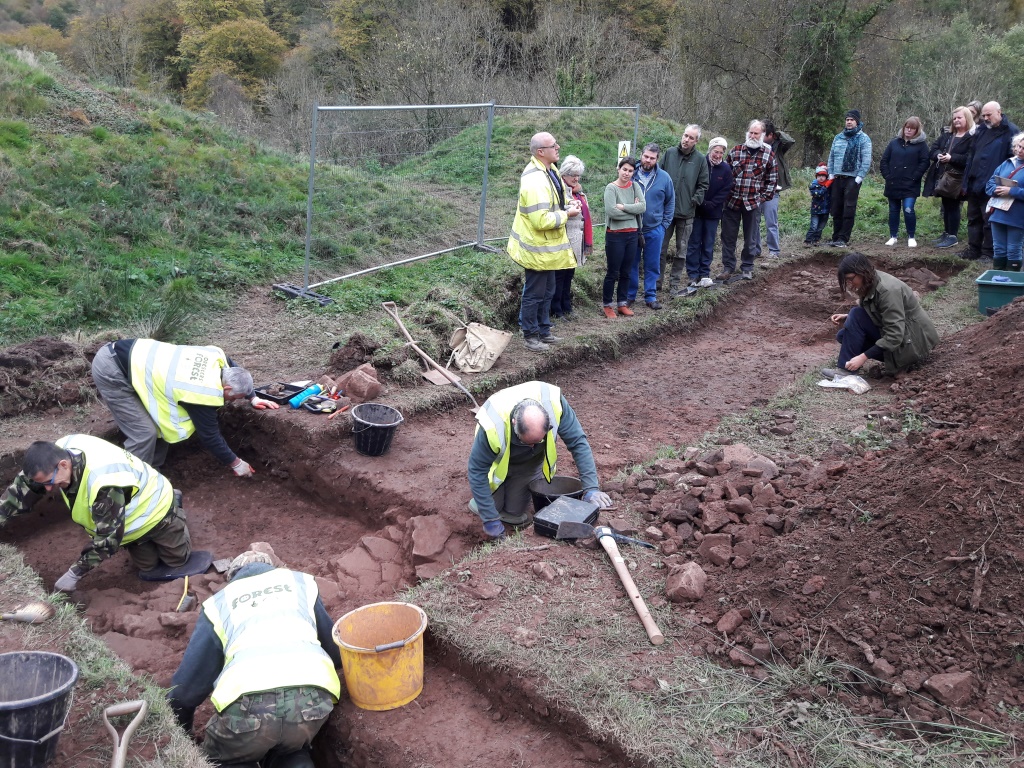Soudley Camp community excavation
- 9th November 2017
Our community excavation at Soudley Camp in the Forest of Dean has come to an end. Over eight days a team of local volunteers and WAAS archaeologists dug three trenches and five test pits in this enigmatic ancient monument. The investigations were part of the Foresters’ Forest Programme, a Heritage Lottery Fund project.
Soudley Camp sits on a promontory of high ground with steep escarpments on two sides and a large earthwork bank and outer ditch across the accessible western side. A dip in the centre of the bank is presumed to be the site entrance. The site is designated as a Scheduled Ancient Monument, meaning that it is of national importance and consent is needed before any intrusive investigations can take place (which our excavations were granted). Unusually for a Scheduled Ancient Monument, not much is known about it.

Soudley Camp earthworks survey (Dean Archaeology Group)
The key aim of the investigations were to understand the date and character of the monument (how old it is and what it was used for). Whilst the excavation cannot definitively say when the enclosure was built, the lack of finds from the Roman, medieval and post-medieval periods means we can probably discount these. This leaves the Anglo-Saxon/early medieval and prehistoric periods – the Neolithic, Bronze Age and Iron Age.
A couple of probable Late Neolithic to Early Bronze Age flint tools were found, dating from around about 4000 years ago, although these tools are thought to be stray losses rather than evidence of occupation or activity associated with the earthworks. In contrast, a distinctively shaped Iron Age quern stone is likely to relate to the camp itself. This large, heavy domestic object was recovered from a large posthole or small pit. The quern is unlikely to be an accidental loss and, as the only significant datable find, points towards Soudley Camp being Iron Age in date (700 BC – AD 43).
What the camp was used for is even harder to pin down. The size and shape of the earthwork ditch and bank, and the steep drops on the two other sides overlooking the valley, do suggest the camp might have been defensive in nature. However, our excavation trenches and test pits have shown that the ditch is very shallow and gentle rather than steep sided and deep, as expected of a defensive site. The camp is broadly similar to inland promontory forts that were built during the Iron Age, but Soudley Camp is very small compared to other examples. Iron Age forts were originally thought to be defensive and built during times of war, but these days we tend to think that they were more symbolically than practically defensive. On a day to day basis these sites were probably used for other activities, either domestic or industrial.

Iron Age beehive quern found at Soudley Camp (half the top stone)
Without fully excavating the centre of Soudley Camp, which would take more time and resources than we had available, it won’t be possible to say exactly what the site was used for with any great certainty. The discovery of half a quern stone, used to grind grain into flour, does show that people were living in or around the Soudley area during the Iron Age, growing and processing crops. Distinctively shaped, the quern stone is identifiable as an Iron Age ‘beehive’ quern. The stone is unlikely to have been carried far due to its weight. It is entirely possible people were grinding corn in Soudley Camp 2000 years ago, hinting that the camp may have been a domestic site (a suggestion further supported by the almost complete absence of iron-working waste, which characterises many industrial sites in the Forest). More recently (probably the last 200-300 years), the site appears to have been re-used by charcoal burners, who operated widely throughout the forest.
Two early 20th century photos of Soudley Camp and a description from 1877 throw up new questions, as they suggest there was originally a low bank, now lost, along the northern or eastern side of the site. Hopefully some more research will show whether these banks were actually present or not…

Soudley Camp in the early-mid 20th century (image courtesy of Ruth Fletcher)
We really enjoyed sharing our findings with visitors at the open day and local school children from Soudley and Lydbrook. Once again, we would like to say a massive thank you to everyone who took part in the field school at Soudley and for the hard work you put in – all 781 volunteer hours were greatly appreciated! The excavations have helped answer some important questions about the monument, as well as throwing up new ones.


Post a Comment